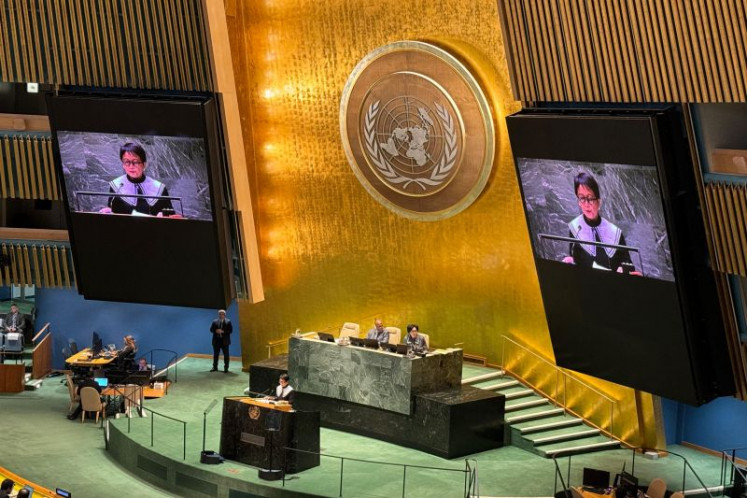Downstreaming potential is no mere daydreaming
The criticisms against the government's nickel downstreaming policy may have a grain of truth in them, but they should also be taken with a grain of salt.
Change Size
 Time to rest: Workers make their commute home after work in the nickel-based Indonesia Morowali Industrial Park (IMIP) in Bahodopi district, Morowali regency, Central Sulawesi on Jan. 26, 2024. (Antara/Mohamad Hamzah)
Time to rest: Workers make their commute home after work in the nickel-based Indonesia Morowali Industrial Park (IMIP) in Bahodopi district, Morowali regency, Central Sulawesi on Jan. 26, 2024. (Antara/Mohamad Hamzah)
“When I was still a farmer, sometimes we made profits, but sometimes we did not. If [the crops] failed, we continued to have debts.”
That is how Fatiamah, a native of Southeast Sulawesi, recalled the days before downstreaming. When companies flocked to her hometown, she decided to open a small fruit store, which improved her family's well-being. “Thank God, there is this [nickel processing] company now,” she said.
Hendra is among the factory workers that small shops like Fatiamah’s cater to. “I am happy to be able to work here, because I can help my family and younger siblings,” said Hendra, who now earns more than minimum wage workers in Jakarta.
The stories of Fatiamah and Hendra are nothing but irrelevant noise to the detractors of downstreaming, who posit that downstreaming does nothing to promote the prosperity of local communities and only engenders environmental degradation. Moreover, nickel downstreaming is foolhardy because electric vehicle battery technology is rapidly shifting into lithium iron phosphate (LFP) batteries that don’t use nickel at all.
While there is a grain of truth in the criticism, we should take it with a grain of salt.
First, on poverty: The poverty rate might fluctuate if you focus only on one brief period, but if you look at the long term, the decline in poverty is unmistakable.
In 2016, the poverty rate in Morowali, home to the largest nickel processing hub, was 16.18 percent, whereas in 2022 the rate had fallen to 12.58 percent, according to the Central Sulawesi Statistics Agency. In 2017, according to the national labor force survey conducted by Statistics Indonesia (BPS), the average income of the working age population in Morowali was less than Rp 300,000 (US$19) per month. By 2022, that figure had jumped to almost Rp 4 million.

















